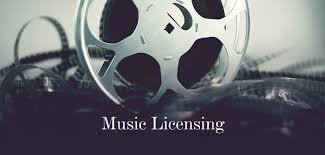Copyrighted music can only be used with permission, and that’s what music licencing is all about. Licensed music is created to ensure that copyright owners of musical works get rewarded for specified uses of the work. Without a separate agreement, a purchaser has only restricted rights to utilise the material.
Music licensing in Australia is the principal means by which musicians can earn royalties from the use of their work, as they grant authorisation to others wishing to do so. There are six sorts of licences to choose from when it comes down to licencing options. Synchronisation licence, mechanical licence, master licence, public performance licence, print rights licence, and theatrical licence are all examples of these types of licences.
Sheet music reproduction, theatre performances, jukeboxes, and big movie pictures are just some of the ways original works can be used. People who want to use copyrighted material must first obtain legal authorisation from the creator through a music licence. In general, a music licence is required if you’re going to utilise a song (that isn’t yours) in a public setting. You’ll get the right to use and republish the piece in this licence. To learn further about music licencing and copyrights, please visit these sites:
Below are the six most common types of music licences, as well as some examples of how they’re put to use:
- The licence for synchronisation (Sync License): Musicbed’s platform is built solely on syncing musicians and composers. This method of music licencing in Australia is for music used in conjunction with visual material. It can be used for commercials, streaming advertisements, studio films, personal videos, corporate communications, and more.
- Mechanics’ Permission: Any physical replication of an artist’s work necessitates mechanical permission. Production and distribution of CDs and other physical media are mostly covered here. Musicians, or copyright holders, are paid per-copy by record companies, distributors, and publishers for their mechanical terms. Even if you use a little value of the original music in your cover recording, you’ll still need a mechanical licence. This includes adding your lyrics, re-mixing, or changing any aspect of the original audio that undermines its overall integrity.
- Licensed Master: Master licences are more difficult to understand because they are similar to sync licences but have fewer restrictions. The individual who owns a song’s recording has a master right. Pre-recorded music can be used in visual or audio creation, but the master licence does not allow a user to re-record music (i.e. to cover or edit a song). In most cases, a master licence and a sync licence are required to run the software.
- License to Perform in Public: The most common type of music licence issued now is this one. Even though the term “performance” may be too restrictive, it encompasses all media in which a work of art is broadcast. This covers anything from jukeboxes playing music to concerts and everything in between. Companies that handle public performance rights and payout music royalties per-use basis, like BMI, SESAC, and ASCAP, are known as performing rights organisations (PROs).
- Licensing for Print: Physical copies of sheet music are covered by this agreement. A copyright licence is required whenever someone publishes a collection of copyrighted sheet music or whenever the sheet music of copyrighted works is duplicated.
Licensing for the stage: Theatrical licences, another particular type of legal permission, are widespread in the theatre industry. The licence is required for any public performance of a copyrighted work.

